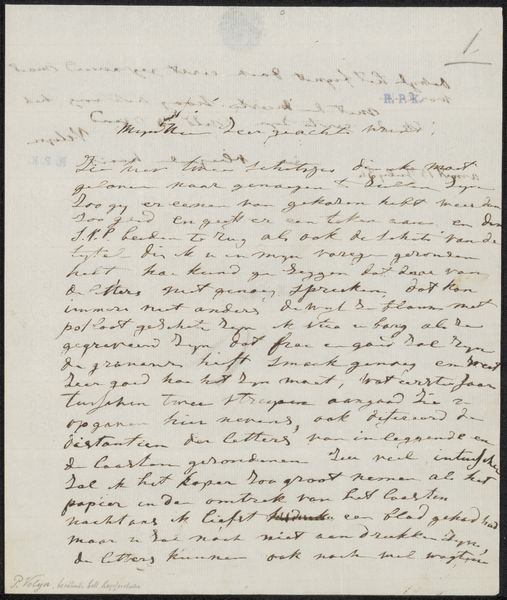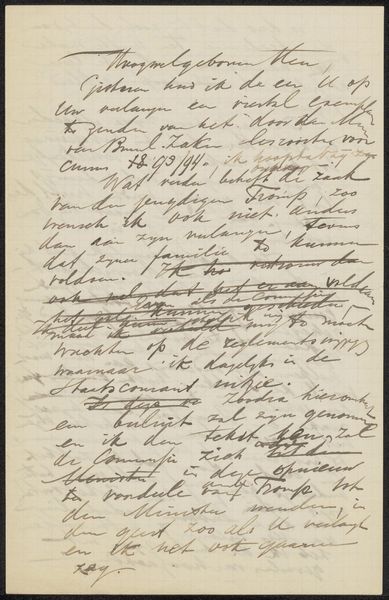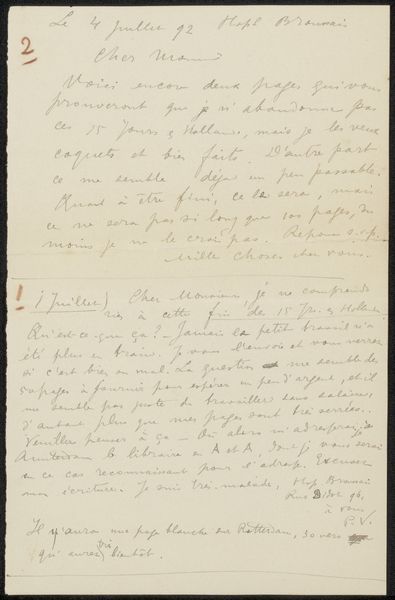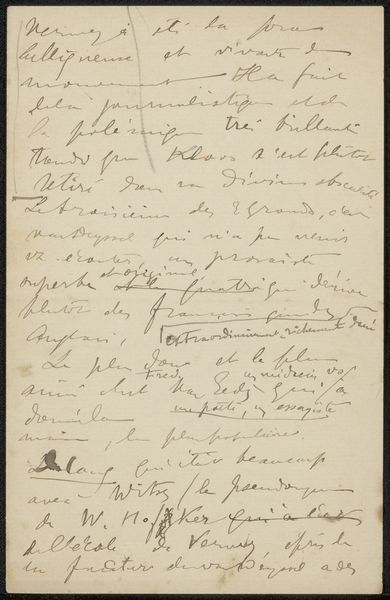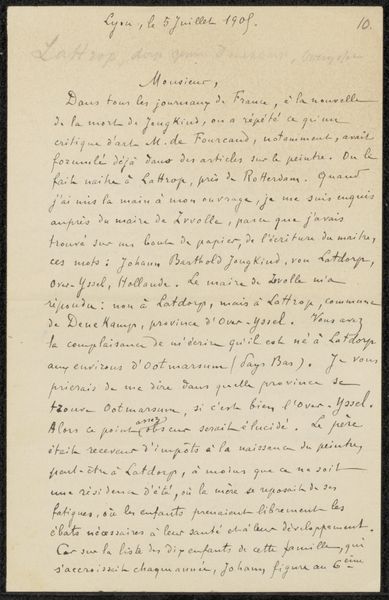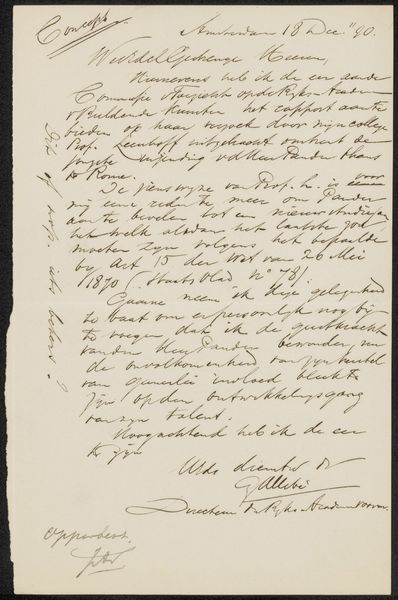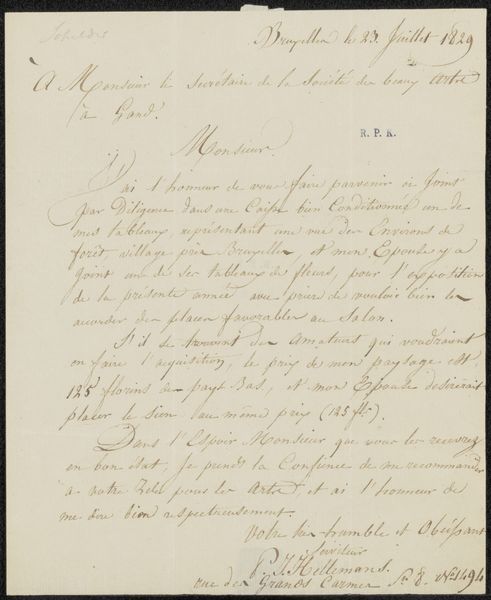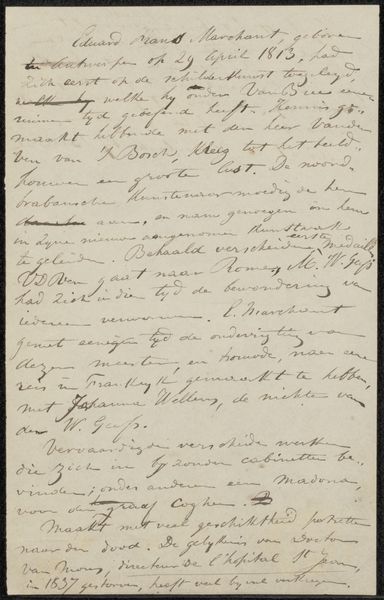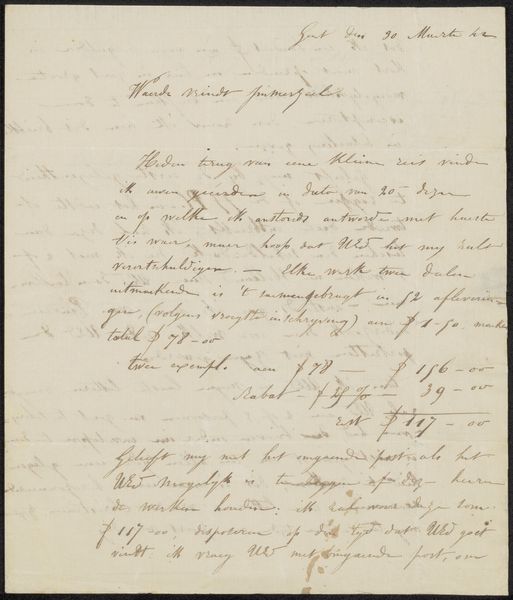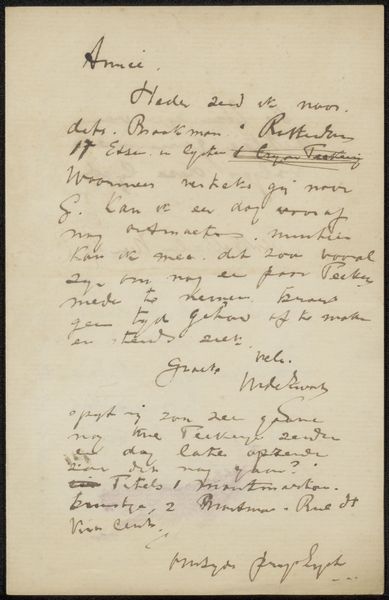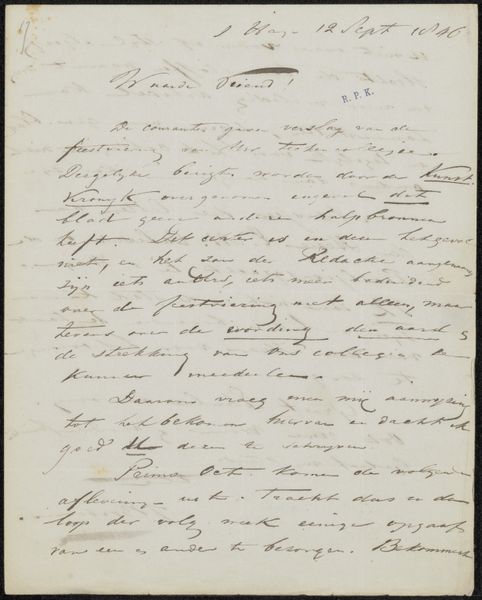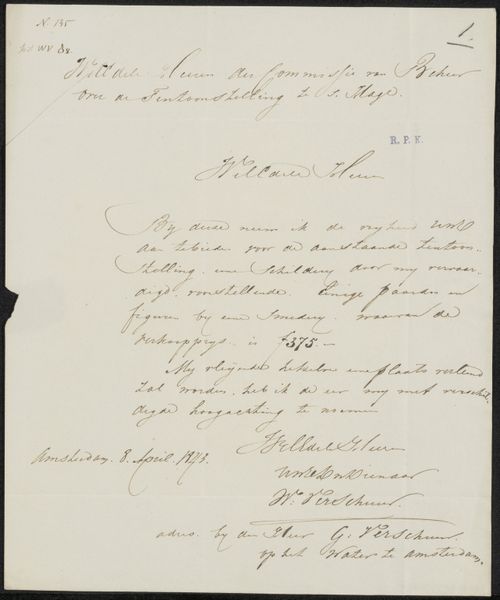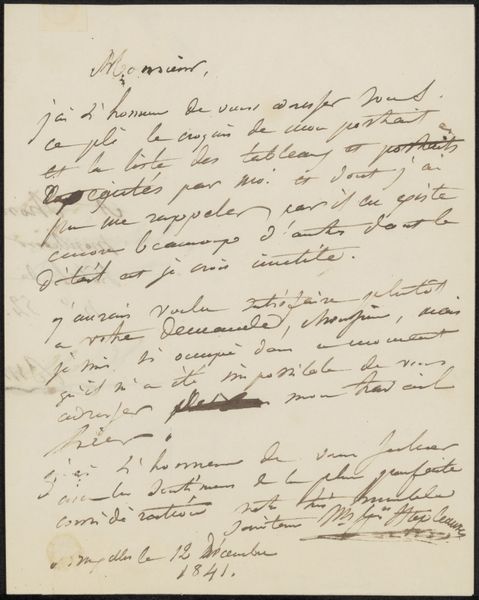
drawing, paper, ink
#
drawing
#
paper
#
ink
#
modernism
#
calligraphy
Copyright: Rijks Museum: Open Domain
Curator: So, what strikes you about this piece? Editor: This is a transcription of a letter to Philip Zilcken, dating from sometime between 1867 and 1930. It’s a drawing in ink on paper held at the Rijksmuseum, and… well, the handwriting makes it seem very personal and immediate, but the language itself—I'm not sure, what do you see in this work? Curator: I see a conversation – a dialogue not only between individuals, but between artistic movements and social currents. Consider Zilcken himself: he moved within impressionist circles while also championing distinctly modern voices. What does it mean to inscribe and preserve correspondence like this, to grant it the same status as a painting or sculpture? Is it a desire to capture the pulse of the artistic community, to archive its intellectual and creative struggles? Editor: I suppose so... the letter does mention several artists. Curator: Exactly. This letter serves as a document of artistic networks, referencing contemporary masters and their potential involvement in publications. It speaks to the politics of inclusion and exclusion that shape art history. What does this letter, as a preserved artifact, tell us about who gets remembered, and why? How do power dynamics and social circles affect artistic legacies? Editor: So it’s not just about the art, but also about the social context of the time. Curator: Precisely. And the choice of calligraphy – isn't it interesting how the formal script attempts to legitimize these conversations and make them historically enduring? It’s more than just handwriting, it's a performative act, staking a claim in the unfolding narrative of modern art. Editor: I see… It's making me think about how history is written. Thanks for opening my eyes. Curator: Indeed! Thinking of this piece as a historical artefact makes me reconsider how information can be conveyed, what messages these objects communicate, and the potential consequences therein.
Comments
No comments
Be the first to comment and join the conversation on the ultimate creative platform.
